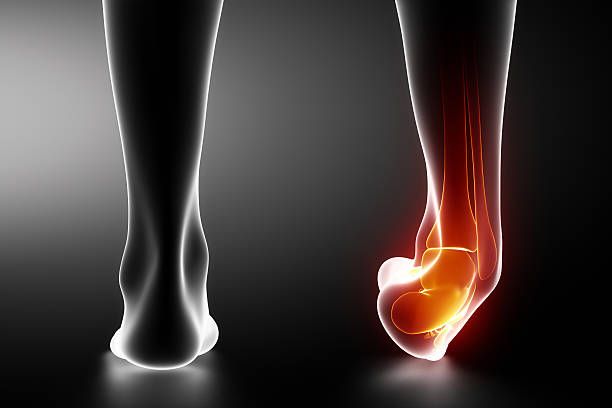
GET A QUOTE
How Long Should You Rest a Badly Sprained Ankle?
Proper rest is crucial when dealing with a badly sprained ankle. Without it, the recovery process can be prolonged, leading to potential complications. In this article, we'll explore the significance of resting a sprained ankle, delve into the prevalence and implications of ankle sprains, and outline the content to follow.
Understanding Ankle Sprains
An ankle sprain occurs when the ligaments connecting the bones in the ankle joint are stretched beyond their normal range, leading to pain and swelling. Understanding the anatomy of the ankle and the mechanism of injury is essential to grasp the significance of rest in the healing process.
Common causes of ankle sprains include sudden twists or turns, falls, or sports-related injuries. These activities can put excessive stress on the ligaments, resulting in sprains. Additionally, certain risk factors such as previous ankle injuries, inadequate footwear, or uneven surfaces can increase the likelihood of sprains.
Severity of Ankle Sprains
Ankle sprains are often classified into different grades based on their severity. Grade 1 sprains involve mild stretching of the ligaments with minimal swelling and discomfort, while grade 2 sprains indicate partial tearing of the ligaments, resulting in moderate pain and swelling. Grade 3 sprains are the most severe, involving complete ligament tears and significant swelling and instability. Understanding the severity of the sprain is crucial as it directly impacts the healing time and treatment approach.
Healing Time for Different Grades
Grade 1 Ankle Sprains
Grade 1 ankle sprains, characterized by mild stretching of ligaments, typically heal within a few weeks with proper rest and care. While some individuals may recover more quickly, it's essential to allow sufficient time for the ligaments to heal fully.
Grade 2 Ankle Sprains
In the case of grade 2 ankle sprains, where there is partial tearing of ligaments, the healing process may take slightly longer, ranging from four to six weeks. Adequate rest and adherence to treatment recommendations are crucial for optimal recovery.
Grade 3 Ankle Sprains
The most severe grade 3 ankle sprains, involving complete ligament tears, require the longest healing time. Recovery can take anywhere from three to six months, and in some cases, residual pain or instability may persist even after a year. Patience and commitment to rehabilitation are essential for successful recovery.
Proper Rest and Rehabilitation
Importance of Initial Rest and Management
Proper rest and management in the early stages of ankle sprain are essential for facilitating healing and preventing further damage. Resting the ankle, applying ice, compression, and elevation (RICE), helps reduce swelling and pain, laying the foundation for effective rehabilitation.
Overview of RICE Method for Acute Sprain Treatment
The RICE method—rest, ice, compression, and elevation—is a cornerstone of acute sprain treatment. By resting the affected ankle, applying ice to reduce inflammation, using compression to support the joint, and elevating the foot to minimize swelling, individuals can promote healing and alleviate discomfort.
Transition to Recovery Phase and Weight-Bearing Exercises
As the initial acute phase subsides, transitioning to the recovery phase involves gradually reintroducing weight-bearing exercises and mobility. Physical therapy may be recommended to strengthen the muscles surrounding the ankle, improve range of motion, and enhance overall stability.
Rehabilitation and Preventive Measures
Role of Physical Therapy in Ankle Sprain Recovery
Physical therapy plays a vital role in ankle sprain recovery, focusing on restoring strength, flexibility, and proprioception to the injured joint. Through targeted exercises and manual techniques, physical therapists help individuals regain functional mobility and reduce the risk of future injuries.
Techniques to Prevent Future Ankle Sprains
Preventing future ankle sprains involves addressing underlying risk factors and implementing preventive measures. This may include wearing appropriate footwear, strengthening the muscles of the lower extremities, and practicing balance and proprioceptive exercises to improve stability and coordination.
Incorporating Balance Training and Strength Exercises for Long-Term Stability
Incorporating balance training and strength exercises into a comprehensive rehabilitation program can promote long-term ankle stability and reduce the likelihood of recurrent sprains. By improving proprioception and enhancing muscular support around the ankle joint, individuals can enjoy a more active and injury-resistant lifestyle.
Conclusion
Rest is paramount in the recovery process of a badly sprained ankle. Understanding the severity of the sprain and adhering to proper rest and rehabilitation protocols are crucial for optimal healing. While the healing process may seem prolonged, it is essential to remain patient and committed to the prescribed treatment plan. By following through with rehabilitation exercises and preventive measures, individuals can regain strength, stability, and confidence in their ankle joint.
For high-quality first aid and medical products to aid in the management of ankle sprains and other injuries, consider RisenMedical. Specializing in a wide range of first aid kits, dressings, bandages, cast protectors, and wound care products, RisenMedical provides reliable solutions for individuals seeking to maintain their health and well-being.


